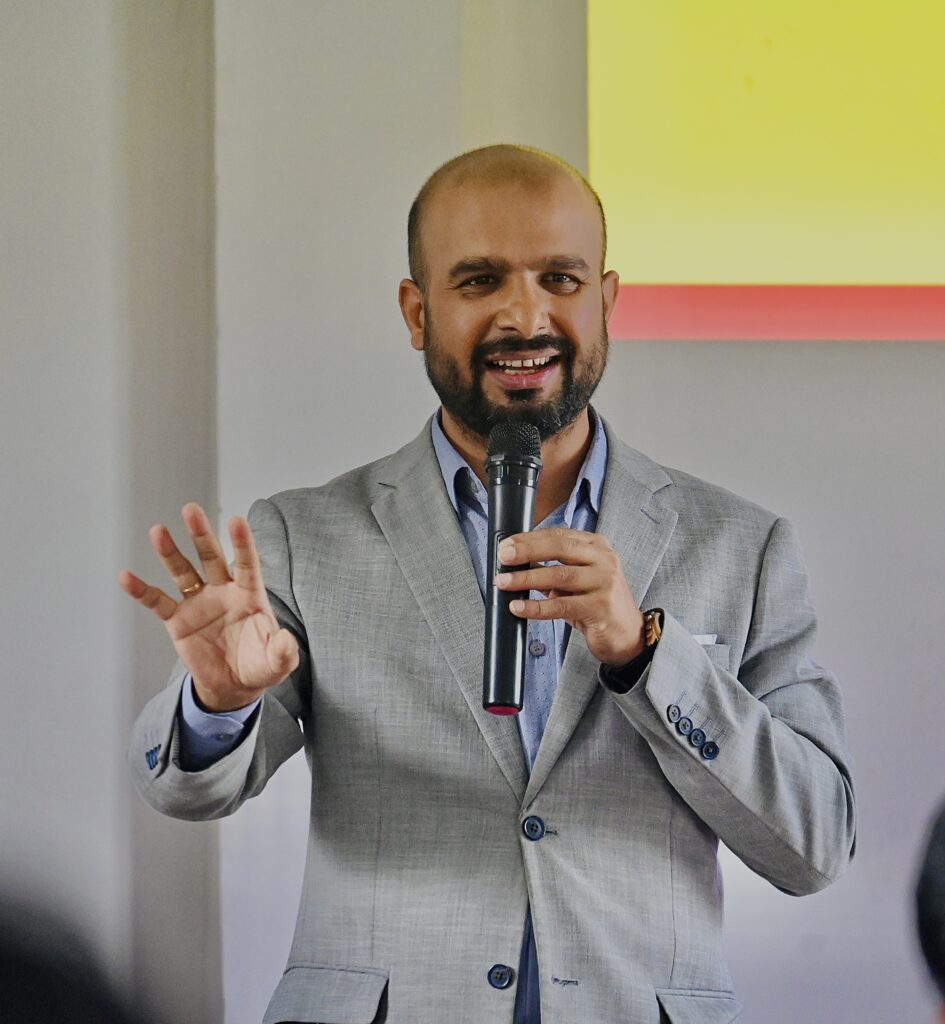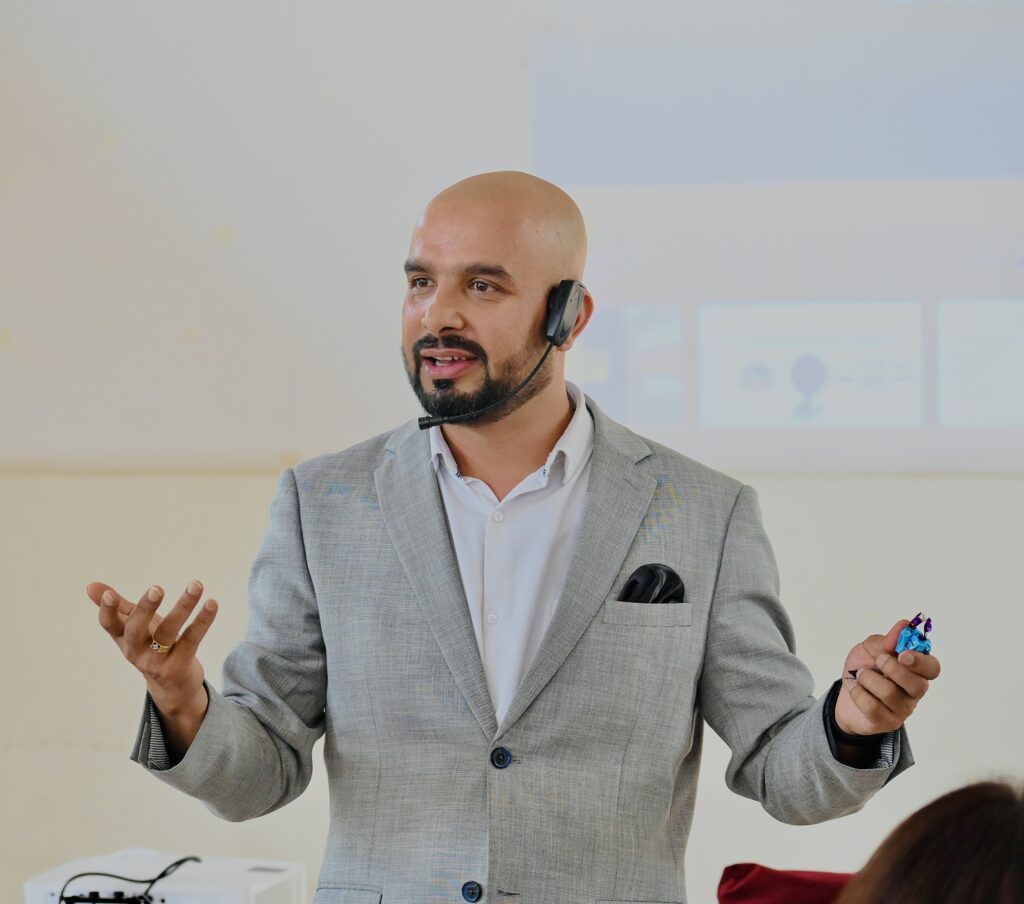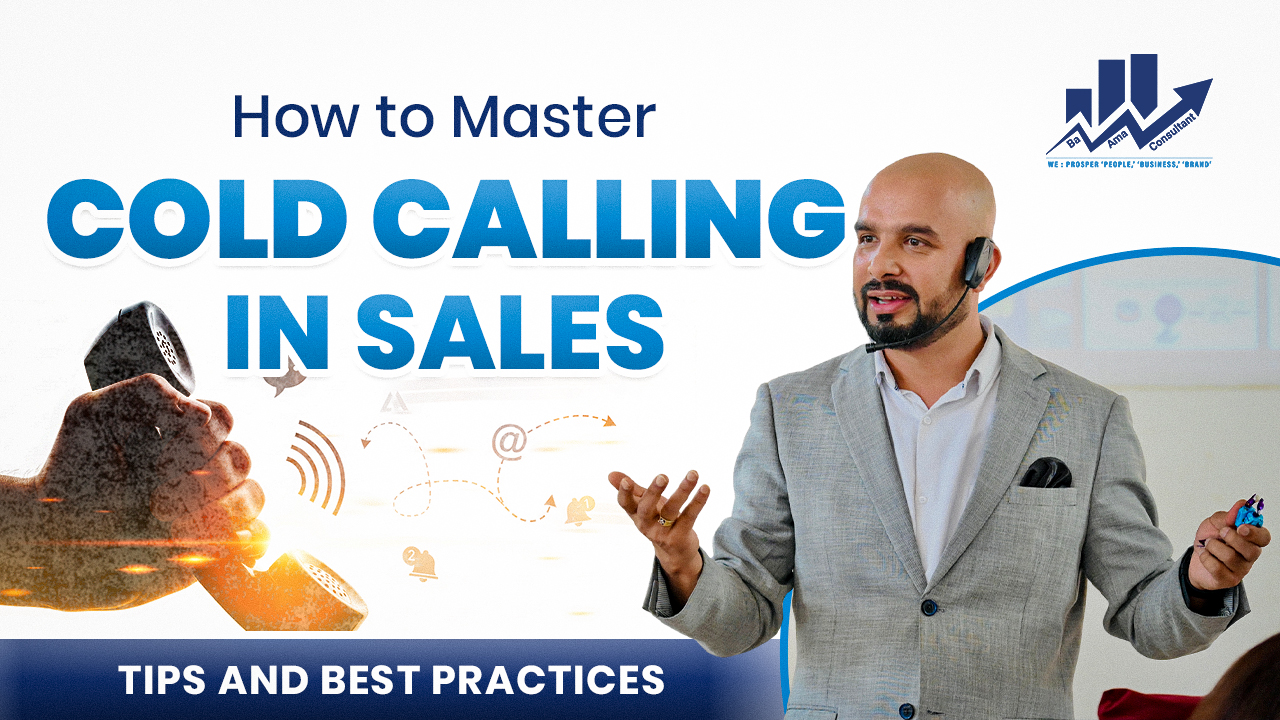Introduction
Cold calling the very phrase can send a chill down the spine of even seasoned sales professionals. It’s raw, direct, and often comes with the sting of rejection. Yet, despite the rise of digital marketing, cold calling remains one of the most effective tools in the sales arsenal. Why? Because conversations close deals and cold calls are often the first real conversations with potential clients.
I’m Diwakar Rijal, a sales trainer and motivational speaker in Nepal with over two decades of experience in the sales trenches especially in the high-stakes world of pharmaceutical sales. Throughout my journey, I’ve learned that cold calling isn’t about pushing a product it’s about creating conversations, building trust, and providing solutions. With the right mindset, method, and action plan my signature 3M Model anyone can master this skill.
In this blog, I’ll break down the essential steps to become a confident and effective cold caller. Whether you’re just starting in sales or looking to sharpen your skills, this guide is your roadmap to mastering cold calling in 2025 and beyond.
What is Cold Calling? And Why Is It Still Relevant?

Cold calling is the process of reaching out to potential customers who haven’t previously interacted with your business. Unlike warm leads, cold leads haven’t shown interest yet which makes the call more challenging but also more powerful when done right.
So, in the age of AI, social media, and automation is cold calling dead?
Absolutely not. In fact, studies continue to show that one-on-one conversations are still among the highest-converting sales activities. People may ignore your ads or emails but a voice on the phone creates immediacy and connection.
During my years in sales, I’ve seen companies scale their revenue dramatically just by building consistent cold calling habits. It’s not about reading from a script it’s about being human, curious, and persistent.
A salesperson armed with a clear purpose and authentic tone can make cold calls that warm hearts and open wallets.
The Mindset Before the Call (M1: Mindset – Diwakar’s 3M Model)

Before you even dial the number, your mindset determines your outcome.
One of the biggest barriers in cold calling is fear of rejection. Most people hesitate because they’re afraid of hearing “No.” But let me tell you something I teach in every workshop: “A ‘no’ is not the end it’s just the beginning of a better conversation.”
Here’s how to shift your mindset before every call:
- You’re not selling, you’re helping.
Go into the call with the belief that you have something valuable to offer something that can improve your prospect’s life or business. - Detach from the outcome.
Focus on having a quality interaction, not closing the sale in one call. - Confidence is contagious.
Your tone, energy, and intent are felt immediately. If you sound uncertain or nervous, your prospect will feel it. But if you’re calm, clear, and focused they’ll listen.
Diwakar’s Tip: Before each call, I recommend a 30-second mindset ritual. Take a deep breath, review your value proposition, and remind yourself: “I’m here to solve problems, not sell products.”
This mindset is the foundation of successful cold calling. And like any foundation, it needs daily reinforcement.
Preparation: Know Your Prospect
The biggest cold calling mistake? Picking up the phone without doing your homework.
In today’s business world, generic pitches don’t work. If you want people to listen, you need to know who you’re calling and why they might need what you offer. Research builds relevance and relevance builds trust.
Here’s a simple checklist I recommend for every cold call:
Diwakar’s Pre-Call Research Checklist:
- Name & Role of the person you’re calling
- Company background: Size, industry, recent news
- Pain points they might have: Based on sector or business model
- LinkedIn insights: Common connections, recent activity
- Reason for your call: A benefit that directly relates to them
When you demonstrate even a small amount of effort in understanding your prospect, the dynamic shifts. You’re not just another salesperson you’re a professional who respects their time.
Diwakar’s Tip: I always say, “Spend 2 minutes preparing, save 10 minutes explaining.” Knowing your prospect reduces resistance and increases conversion.
Also, use a CRM or spreadsheet to track:
- When you last contacted them
- What was said
- When to follow up
This makes your approach systematic, not scattered which is crucial in any sales pipeline.
The Cold Calling Script: A Framework That Works

Now let’s get into the meat of it what do you actually say?
A good cold call isn’t read off a script like a robot. It’s structured like a friendly, purposeful conversation. You’re there to hook interest, build rapport, and lead the prospect toward the next step not force a sale on the spot.
Here’s a simple 5-step cold calling script framework that I teach in my sales bootcamps:
Diwakar’s Cold Call Framework: G.R.V.A.A.
- G – Greeting:
“Hi [Name], this is [Your Name] from [Your Company]. Did I catch you at a good time?” - R – Reason for the Call:
“I’m reaching out because we help [similar clients] solve [specific problem], and I thought it might be relevant to you.” - V – Value Statement:
“For example, we recently helped [Client Name] increase [result] in just [time frame]. I believe we could explore something similar for you.” - A – Ask a Question:
“Can I ask — how are you currently handling [specific area]?” - A – Ask for Next Step:
“Would it make sense to set up a 15-minute call next week to dive deeper?”
This framework keeps the conversation natural but purposeful. You’re opening with respect, offering value, engaging curiosity, and guiding toward a logical next step.
🚫 Common Mistakes to Avoid:
- Talking too much (listen more than you speak)
- Sounding scripted or robotic
- Not customizing your intro based on industry
- Pushing for a sale too early
- Getting discouraged after the first objection
Diwakar’s Tip: “Cold calls are not pitches they’re invitations to a conversation. Focus less on selling, more on opening doors.”
Even if a call doesn’t lead to an immediate yes, it can still lead to a future opportunity, referral, or valuable insight.
Handling Objections with Confidence (M2: Method)
Let’s be real: objections are part of the game.
If you’re making cold calls, you’re going to hear things like:
- “I’m not interested.”
- “We already have a provider.”
- “Send me an email.”
- “Now’s not a good time.”
But here’s the secret: Objections are not rejections they’re invitations for deeper dialogue.
As part of my 3M Model, the second “M” stands for Method and one of the most powerful methods in sales is learning how to handle objections without getting defensive or discouraged.
The A.R.A. Formula – Diwakar’s Objection Handling Framework:
- Acknowledge:
“Totally understand a lot of people I speak with feel the same initially.” - Reframe:
“What they found, though, is that by just exploring this for 10 minutes, they discovered opportunities they hadn’t considered.” - Ask Again:
“Would it make sense to at least explore this over a short discovery call next week?”
This approach does three things:
- Shows empathy
- Rebuilds interest
- Keeps the door open
Real-Life Example from Diwakar Rijal’s Training:
In one of my corporate workshops in Kathmandu, a salesperson kept hearing: “We’re happy with our current vendor.” I coached her to respond with:
“That’s great loyalty to a partner means they must be delivering value. Out of curiosity, if there was one thing you’d want improved, what would it be?”
This non-confrontational reframe opened up a real discussion and three weeks later, she closed a deal.
Diwakar’s Tip: Objections are signals, not stop signs. If you’re hearing them, you’re in the conversation and that’s already a win.
Following Up and Staying Organized (M3: MotivAction)
The third part of the 3M Model MotivAction is all about taking consistent action with focus and follow-up.
Most salespeople make one call and move on. That’s a mistake.
📊 Here’s a fact:
80% of sales happen after the 5th contact.
But only 8% of salespeople ever make it that far.
The key to mastering cold calling isn’t just the call it’s what comes after the call.
Diwakar’s Follow-Up System:
- Call → Log: Immediately log the outcome interested, not interested, call back later, etc.
- Email Follow-Up: Even after a quick call, send a personalized message (template coming in a future post!)
- Set a Reminder: Use a calendar, CRM, or simple Google Sheet to set your next touchpoint
- Keep the Energy Alive: Share a helpful article, a client success story, or even a motivational quote to stay on their radar
Tools I Recommend:
- Trello / Notion: For visual follow-up pipelines
- Google Sheets: Easy for teams or solo reps
- HubSpot CRM (Free): For tracking calls, notes, and deals
Diwakar’s Tip: “Make follow-up part of your DNA not a desperate second try, but a professional continuation of value.”
Consistency builds trust. And trust builds sales.
Pro Tips from Diwakar Rijal: What Separates Great Cold Callers
After training hundreds of sales professionals across Nepal, from Kathmandu to Pokhara to Biratnagar, one thing is clear: it’s not scripts or tools that create sales success it’s the person behind the call.
Here are the top habits and traits that I see in high-performing cold callers:
1. Emotional Intelligence Over Aggression
Great cold callers know when to push and when to pause. They listen between the lines, pick up on vocal cues, and tailor their tone accordingly.
“It’s not just what you say it’s how you make them feel.”
2. Listening is Their Superpower
Average salespeople talk 80% of the time. Top performers ask questions and let the prospect talk. They dig deeper and listen with intent.
3. They Use Storytelling
Instead of listing product features, they tell micro-stories:
- “A client in your industry was struggling with X…”
- “After working together for 3 weeks, they saw Y improvement…”
This makes your call memorable and relatability increases the chance of a second conversation.
4. They Reframe Rejection
Every “No” is seen as a step toward “Yes.” They treat objections as a sign of progress — not defeat.
Diwakar’s Tip: Track your wins, lessons, and emotions after each call. Self-awareness leads to self-improvement.
Conclusion: The Cold Call is Not Dead It’s Just Waiting for You to Master It
Cold calling in 2025 isn’t about aggressive sales tactics or robotic scripts. It’s about authentic connection, intelligent preparation, and disciplined follow-up. With the right mindset, method, and motivated action you can turn a “cold” lead into a warm opportunity.
If you’re tired of dreading cold calls and want to start loving the sales process, it’s time to level up.
🚀 Ready to Master Cold Calling?
I’m Diwakar Rijal, and I help individuals and organizations across Nepal turn their sales challenges into wins. Join one of my sales bootcamps, schedule a corporate training session, or connect with me directly to build your team’s sales muscle.
🔗 Visit my website
📞 Book a free strategy call
🎤 Inquire about keynote speaking or training programs

